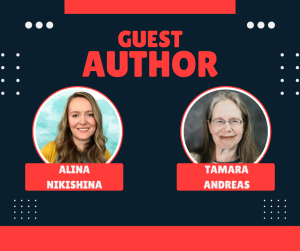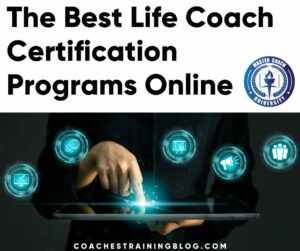We are pleased to share an article entitled “Emotional Healing through Core Transformation: Taking “Parts Work” to the Next Level“ written by Tamara Andreas and Alina Nikishina.

Do any of the following statements resonate with you?
- “I often encounter clients’ inner blocks that stop them from reaching their goals, and I don’t yet have an effective, reliable way to work with these blocks.”
- “I’m not 100% confident in my ability to help clients transform recurring emotional challenges.”
- “Sometimes it feels as if I’m getting clients to push through resistance to take action, relying on willpower or force, rather than effortlessly moving forward.”
- “I help my clients understand their problems better, but this often doesn’t lead to long lasting change.”
- “I mostly rely on reframes or logical inner narrative/language shifts to help clients change their limiting beliefs. However, I find that just coaching clients to think more positively often doesn’t help in the long term with inner resistance or self-sabotage.”
If any of these feel familiar, you’re not alone. Many coaches are discovering that traditional coaching methods, while effective in goal-setting and accountability, can fall short when it comes to addressing the deeper, subconscious barriers that hold clients back.
A “Parts Work” Method that Transforms Inner Blocks
Have you ever heard a client or even yourself saying something like “a part of me wants this, but another part of me is scared, hesitant, and worried”? When we’re stuck, we can think of this as a conflict of inner “parts.”
An experience of inner struggle or “feeling torn” can cause clients to not take any action, because they can’t make a decision that all parts of them are happy with. Alternatively, clients may begin to take action, but then find themselves self-sabotaging through procrastination, perfectionism, or self-criticism.
When we’re in a state of inner conflict, this adds tremendous stress to the system. Imagine if this energy could be re-directed toward creativity, enjoyment, and presence, instead of spinning our wheels!
Many coaches, if they don’t have an effective way to subconsciously transform these inner struggles, encourage the client to harness their willpower. The problem is, using willpower takes vigilance and effort, and as soon as they’re distracted, they likely go right back to the old patterns—because those old patterns were never really transformed.
So, what if we could transform inner struggle into inner resourcefulness? What if we could easily make aligned decisions and take action?
A “parts” approach may be the answer. In recent years, parts work has made its way into self-development circles. Forbes Health and Psychology Today have published many articles about various parts work models. It’s clear that people are resonating with this model for self-development.
A Deeper, Gentler Approach
Many parts models have been developed over the years, including in the field of Neuro-Linguistic Programming, Internal Family Systems, Ego State Therapy, Psychosynthesis, and others. Among these diverse models, one in particular stands out for its ability to not just help us acknowledge and cope with these various aspects of ourselves, but also to transform and heal them at their core.
Core Transformation (“CT”), a method developed by Connirae Andreas in the late 1980’s, offers a unique approach, going beyond simply helping parts communicate better or make new behavioral choices. It helps the parts heal and transform into inner resources that are then integrated into our wholeness. The process itself feels deeply gentle and kind to do, and yet it’s a powerful intervention.
CT embodies the principle that “all parts have a positive purpose.” Even if the surface level behavior of the part isn’t positive, there’s a deeper, positive intention for it that we may not be aware of. Then, CT goes much further than that.
Most of our “inner parts” form during our developmental years to help us survive and feel safe, and loved. These parts have various strategies (or “coping mechanisms”) intended to help us fulfill our deepest needs and desires. Sometimes, those strategies don’t work very well.
For example, let’s say someone gets upset easily. Perhaps when this person was a child, the only way they got attention and love was when they threw tantrums. This strategy doesn’t work well for them today, yet they experience it happening automatically, even though they don’t want it to.
The inner “part” that’s running the tantrum strategy is seeking attention and love, and it has an even deeper need that most methods never discover. It has a deep yearning for a positive wellbeing at its very core, which we call a “Core State.” When this part’s deepest yearning is satisfied through CT, a new response can naturally “bubble up” from the inside. This part now has a wide range of behavioral choices, and can automatically respond more resourcefully.
The Three “B’s” of Human Experience
In the Change Without Struggle micro-book by Tamara Andreas, she explains how the CT process helps us transform from the inside out, because it affects all three levels of human experience.
First, there’s our surface experience, the “Behavioral Level.” It’s what we think, feel, and do that we want to change. For example, a client may want to change the Behavior of procrastinating on a project and feeling worried about it. For this simple “Three B’s” model, we’re calling all our surface experience “Behavior,” including what we do, think, and feel, because “Behavior” starts with a B. This makes it easy to remember. It’s the Behavior of the part.
Second, underneath all dysfunctional Behaviors are limiting Beliefs. For example, our client may have an unconscious belief that they need more clarity before starting on their project, or that procrastinating is treating themselves to a break. There are usually multiple limiting beliefs underneath our behaviors.
Lastly, at the core of human experience is the Being level. Optimally, at the Being level, we’re embodying our true nature – who we really are deep down at our core, underneath all our beliefs and societal identities. At this level, we can experience wholeness, wellbeing, peace, connection, and other natural states we were born with. It’s possible for all of us to access these “Core States,” regardless of our circumstances in life.
However, when an inner part is stuck in an old coping behavior, instead of a wonderful Core State, it’s experiencing a lack, emptiness, or need at the Being level. With Core Transformation, we gently guide these inner parts to re-access their Core State, and then change naturally happens from the inside out.
Importantly, it doesn’t work to just impose a nice wellbeing state on a part. With CT we use a carefully-worded sequence of questions, to help each part discover its own unique Core State. This makes the transformation organic, gentle, and a rediscovery of our own “true nature.”
When these inner parts reach a Core State, we invite them to notice how already having this Core State in an ongoing way transforms all their experience. In this way, any limiting Beliefs they’ve had are naturally dissolved, and the initial Behavior is transformed.
Our client who’s been putting off a project will discover their part’s unique Core State – perhaps something like “peace” or “pure essence.” The process then helps them experience how the Core State automatically dissolves worry and allows space for creativity to open up. After the session, they may notice how it’s so much easier to choose to work on their project rather than putting it off like they had been doing.
Overall, through CT, clients often experience an expanded awareness of their inner world, gaining profound insights and making connections that were previously hidden. They naturally develop creative solutions to their most pressing challenges, without needing to force change or rely on willpower. Instead of feeling torn between conflicting desires, they begin making choices that resonate with their whole, authentic selves. This transformation is not just a shift in behavior but a deep alignment that empowers clients to live with greater ease, purpose, and fulfillment.
Where to Go from Here
So, how can guiding your clients to Core States of Being transform your coaching practice? We invite you to practice CT on yourself to gain firsthand experience. You can also begin applying this question in your practice: How might acknowledging the deeper, positive purpose behind my client’s behaviors open up new pathways for transformation in our sessions? CT takes us much, much deeper than that, but this question can be a good first step. Also, the micro-book Change Without Struggle and a Core Transformation introductory video are available for free at AndreasNLP.com/free.
Let’s continue the conversation by connecting with your colleagues on our Facebook page



